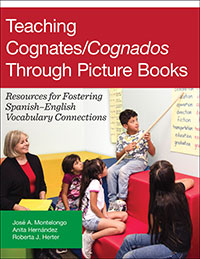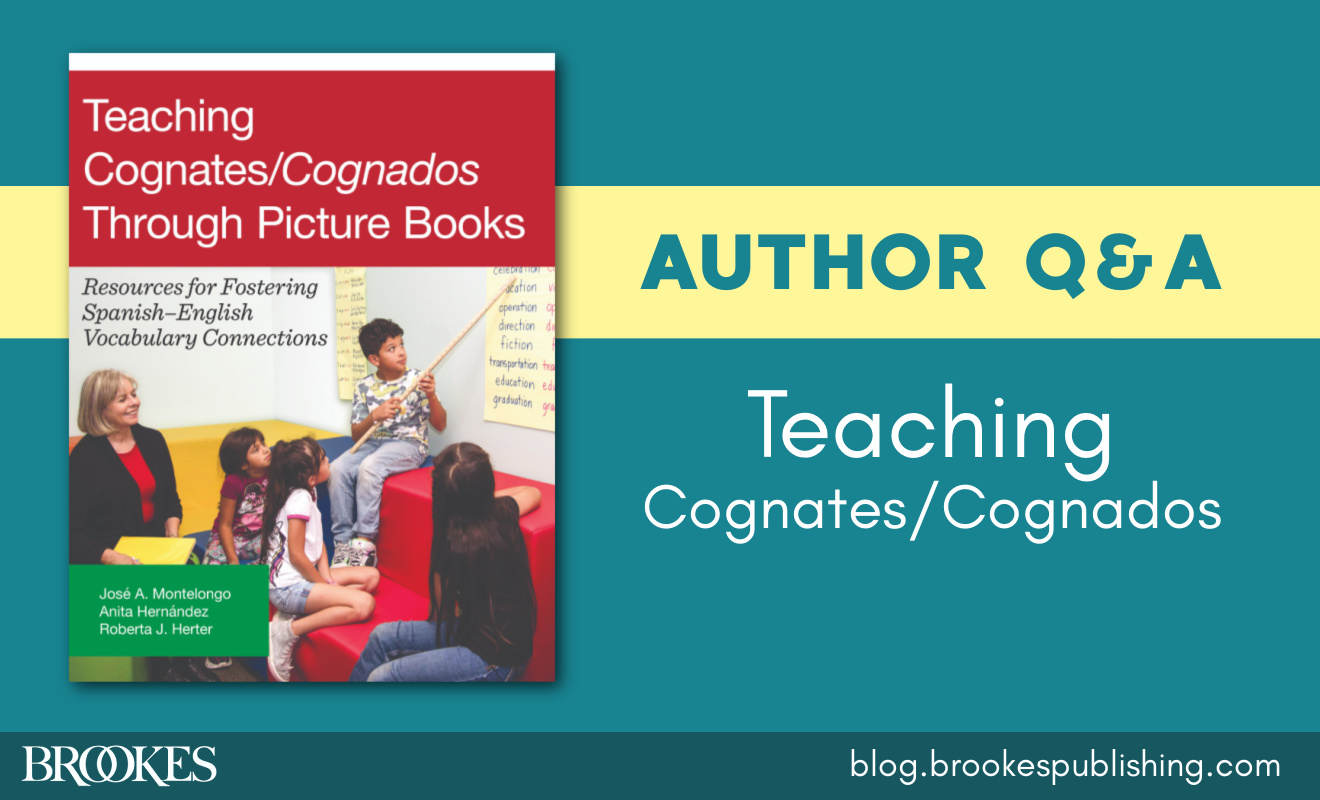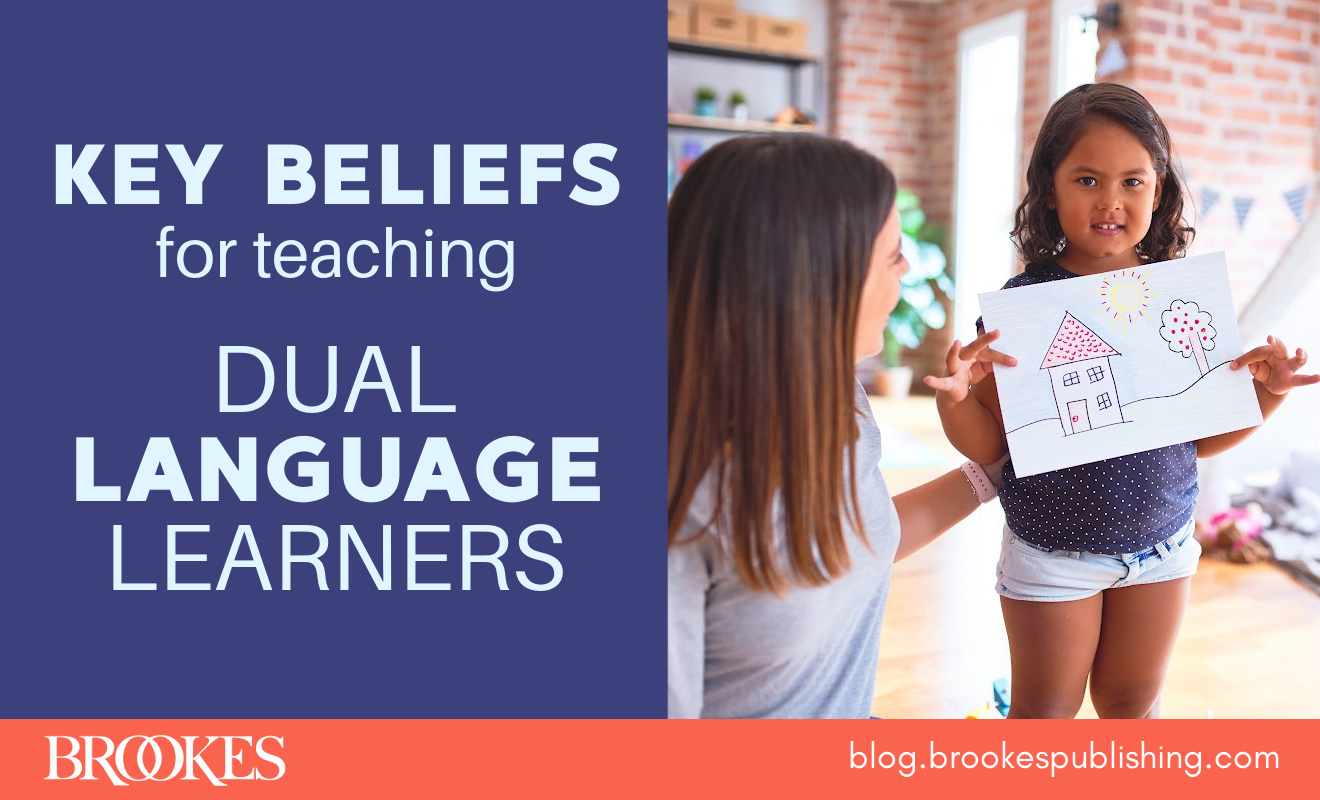 What are cognates, and why should teachers include systematic cognate instruction in their culturally and linguistically diverse classrooms? That’s the topic of today’s Q&A with the authors of the new book Teaching Cognates/Cognados Through Picture Books. Today we’re welcoming authors José Montelongo, Anita Hernández, and Roberta Herter to talk about the book, outline the benefits of cognate instruction, and explain the role of picture book read-alouds in teaching cognates effectively.
What are cognates, and why should teachers include systematic cognate instruction in their culturally and linguistically diverse classrooms? That’s the topic of today’s Q&A with the authors of the new book Teaching Cognates/Cognados Through Picture Books. Today we’re welcoming authors José Montelongo, Anita Hernández, and Roberta Herter to talk about the book, outline the benefits of cognate instruction, and explain the role of picture book read-alouds in teaching cognates effectively.
For anyone who might be new to this term, what is the definition of Spanish–English cognates? Can you provide a few examples for us?
Spanish-English cognates are words that are orthographically and semantically the same or nearly the same in both Spanish and English as a result of a common etymology. There are over 20,000 such cognates, and most of these are academic vocabulary words essential for understanding the texts found at all levels of education.
Here are some common examples of Spanish-English cognates:
Spanish English
conclusión conclusion
hospital hospital
invisible invisible
popular popular
tractor tractor
Here are some more examples:
Spanish English
ambulancia ambulance
ecología ecology
optimista optimist
presencia presence
velocidad velocity
Your book focuses on incorporating systematic cognate instruction into the classroom. How will this type of instruction help support the academic success of young bilingual learners?
Many of the most important vocabulary words useful for understanding informational texts are Spanish-English cognates derived from Latin and Greek. More than one-third to one-half of the words used by educated persons are Spanish-English cognates.
Specific cognate instruction, such as that presented in our book, provides teachers with lessons on how to teach vocabulary-building techniques such as using context clues, the morphological correspondences between English and Spanish, and spelling rules for converting words from one language to the other. We provide lessons for teaching useful rules for recognizing and generating English (and Spanish) words from their Spanish (and English) cognates. All of the lessons and strategies presented are intended to increase the vocabularies of young bilingual learners, resulting in higher levels of reading comprehension and academic success.
At the metacognitive level, Spanish-English cognate instruction legitimizes the use of a student’s native language, be it Spanish or English, in the learning of a second language. Knowing that there is a large category of words known as “cognates” provides language learners with the abilities to divine the meanings of unknown words on their own, as well as giving them the power to participate and share in language discussions with parents, teachers, and friends.
Your method for infusing cognate instruction into the school day involves using read-alouds of high-quality picture books. Why are picture books such an effective medium for teaching cognates?
Prominent reading educators such as Isabel Beck and Margaret McKeown have long suggested that picture books are an effective medium for enriching vocabulary because they contain many Tier Two (adult) and Tier Three (specialized) words that require instruction. In our own research, we have found that high-quality picture books, those that have been honored and suggested by literacy organizations, contain many Spanish-English cognates. Furthermore, the picture books from which we draw the cognate words to teach represent all the disciplinary areas that comprise elementary education: literacy, mathematics, science, and the social sciences.
For busy teachers who might be overwhelmed at the thought of adding “one more thing” to their schedule, how does your book envision working cognate instruction into existing lesson plans? Would it be fairly easy for a teacher to weave it into what they already do?
Our cognate lessons plans are easy for teachers to incorporate into their teaching practice. This is because the cognate strategies we present are those that teachers already use in their general vocabulary and reading lessons, such as teaching context clues, morphology, and spelling.
In the book, we also include activities for reinforcing and extending the cognate strategies we present in the lessons. We provide ideas for anchor charts, word walls, flashcards, sentence completion, and analogy exercises.
Your book also includes access to the Cognate Companion website. Can you talk a little bit about what resources are available on the website, and how it helps teachers quickly integrate cognate instruction into their curriculum?
An important component of the Cognate Companion is the database listing over 3,000 award-winning, high-quality picture books, and the Spanish-English cognates that comprise each book. Once a teacher has located a picture book in the database, they can review all the cognates in the picture book and decide on the words they want to teach their language learners. The database includes each picture book’s reading level and the tiered level of each cognate. Also provided are prefixes, root words, and suffix rules corresponding to each cognate. In addition, we give teachers the applicable spelling rules, if possible, for transforming a word to its English or Spanish cognate. All this information allows teachers to plan what cognates they want to teach, as well as what morphology or spelling lesson(s) they want to include with their picture book read-aloud. We will continue to update and build the Cognate Companion throughout the year.
The Cognate Companion also includes 300 ready-made lesson plans to accompany specific picture books in English, Spanish, or both. As part of our commitment to bilingual education, we will also be adding more and more lesson plans to the Cognate Companion.
***
Cognate instruction is a highly effective way to support the success of young bilingual and multilingual learners. Thanks to the authors of Teaching Cognates/Cognados Through Picture Books for being here today and giving a great introduction to their essential new book. Learn more about it and order your copy below!

Teaching Cognates/Cognados Through Picture Books
Resources for Fostering Spanish–English Vocabulary Connections
By José A. Montelongo, Ph.D., Anita Hernández, Ph.D., & Roberta J. Herter, Ph.D.
This is the first comprehensive, practical guidebook on seamlessly working cognate instruction into existing lesson plans using high-quality picture books. Developed by respected researchers with first-hand classroom experience, this book is a great resource for bilingual educators and specialists as well as monolingual English-speaking teachers who want to support their bilingual learners.





Write a Comment
Your email address will not be published. Required fields are marked *
Post a Comment